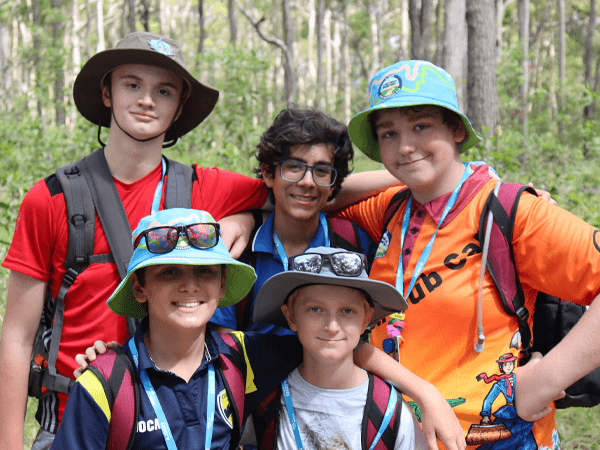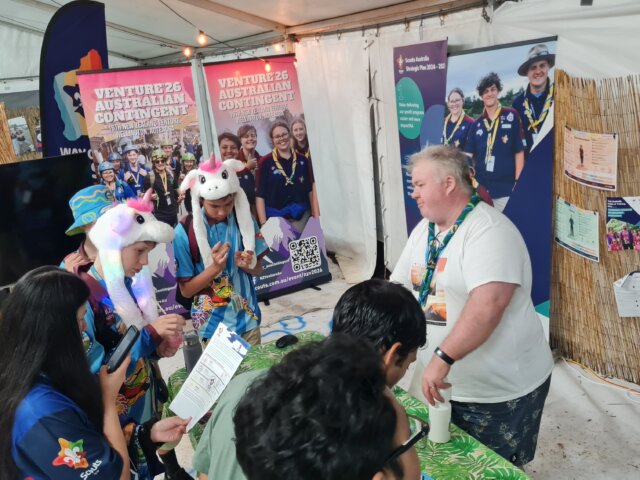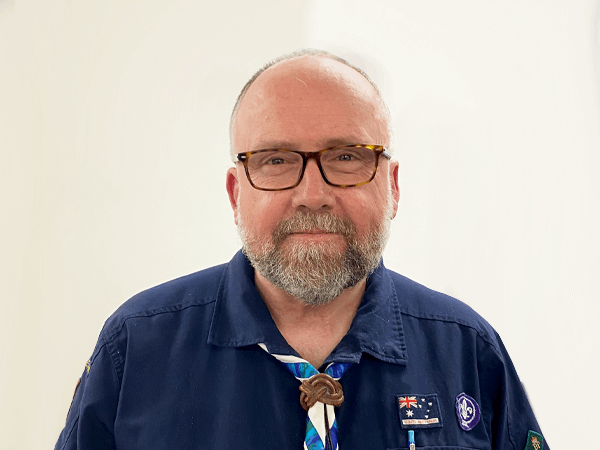The Scouting Journey
Recording Our Scouting Adventures
![]()
When it comes to adventurous activities, we should be keeping a record of all our experiences – but why do we that, how do we do it, is it really that important, and should it only be adventurous activities that we keep track of?
Why Keep Records of Adventures?
Keeping track of your adventures and opportunities provides a record of what you have done, where it’s been conducted and when. Through these records, you’ll be able to reflect back on the personal development during each expedition and the furthering of skills that has occurred. Furthermore, recording your adventures serves as a journey of your learning, and might also help when looking to gain formal industry qualifications.
How Do We Keep A Record of our Adventures?
Keeping records comes down to personal preference. However you decide to keep records, ensure it has the ability to keep track of your practice and experience in any given skill or activity area. The methods must be able to demonstrate the learning journey as the skills have been developed and refined. There’s a variety of ways to record your adventures, with some examples being diaries, photography albums with notes, log books, online blogs, mobile applications, computer software, video or voice recordings.
A popular method is to use log books. Like the other alternatives, a log book enables us to keep track of all the different experiences we have had in any given skill or activity area. Some people keep log books in spreadsheets. Others keep their logs in exercise books, as a reflective journal, a photography journal or series of drawings with some key details. Some log books separate activities and skills into disciplines, others mix activities based on dates. Log books might be kept in diaries, you might set reminders to enter into your log book – realistically, your log book needs to work for you!
For more inspiration, check out this pictorial version of a recording system used by some Joey Scouts!
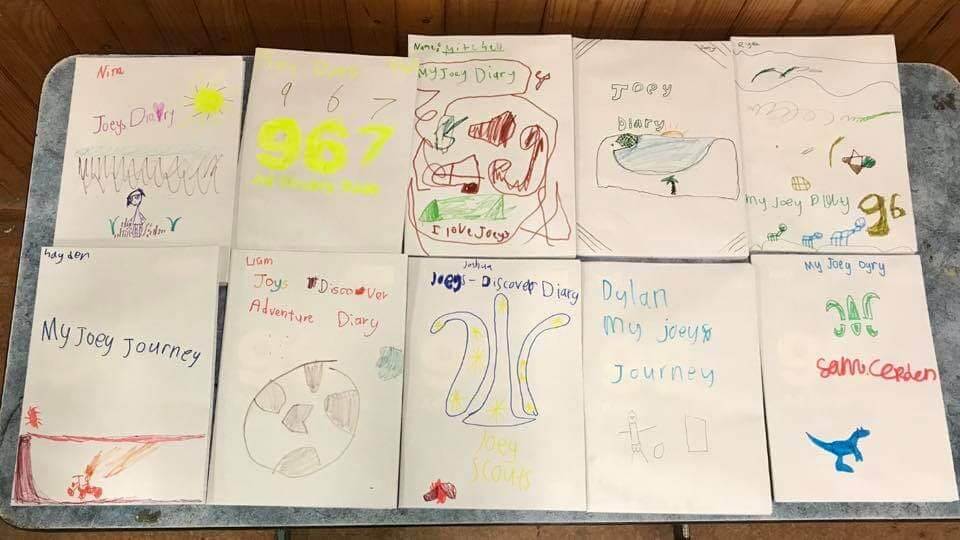
Who Can Record Adventures?
In short, we should all should keep records of our adventures! As members of Scouting, we engage in activities that can be recorded all the time.
- When was the last time you went for a walk?
- Have you walked your dog recently?
- Walking to school, work, sports training, Scouts or even the station might all be recorded in your log book.
- What about cycling, or maybe you are part of ski or surf patrols?
Realistically, the sooner you start keeping a track of what you do, distances, times and people involved, the more comprehensive your records will be.
Keeping records isn’t exclusively for adventurous activities either! Maybe you are interested in creative or performing arts. You could keep notes on the rehearsals and performances you have attended, including practising speaking lines or singing songs to yourself or in front of the mirror. Alternatively, you could keep diaries of the artwork you have created, including details about how long it took to create each piece of work. Perhaps the first few times you made vinyl cuttings, each piece took you ten hours to complete across multiple days or weeks, but progressively you will see that your work is gaining greater detail and/or taking less time. Maybe you are a photographer, and this can be your record of the various places you have been and taken photos, and any editing you might have completed to the photos you share or publish online.
How To Start Recording
Some sections may find it worthwhile to schedule some time to collate everyone’s past adventures into a personal recording system. Adults might need to support youth members in the younger sections to get their records started. These could be picture diaries, using a drawing, or photograph for each activity completed. Meanwhile, older youth members may choose to keep track of their activities through electronic means such as an Excel Spreadsheet, blogging website, or one of the many available mobile applications that are available for this purpose.
Starting early is important. Twenty years of logged activities, even if many of them are short walks, displays greater engagement, dedication and knowledge and skill application than records that are more recent, but significantly more advanced such as hiking the Pacific Crest Trail or Bibbulmun Track.
What Needs to Be Recorded?
Different information may need to be recorded, depending on the activity area. Some examples might be:
Bushwalking
- Date
- Kilometres, days or hours hiked
- Hike difficulty (grade)
- Attendees
- Name of the hike (if applicable)
Rock Climbing
- Date
- Name of the climb
- Height
- Grade
- Major features
- Attendees
- Whether you reached the top of the climb
Sailing
- Date
- Attendees
- Nautical miles, days or hours sailed
- Wind conditions
- Weather conditions
- Major features/stopovers (if applicable)
Check out the example below of how you might like to set up your record keeping system.
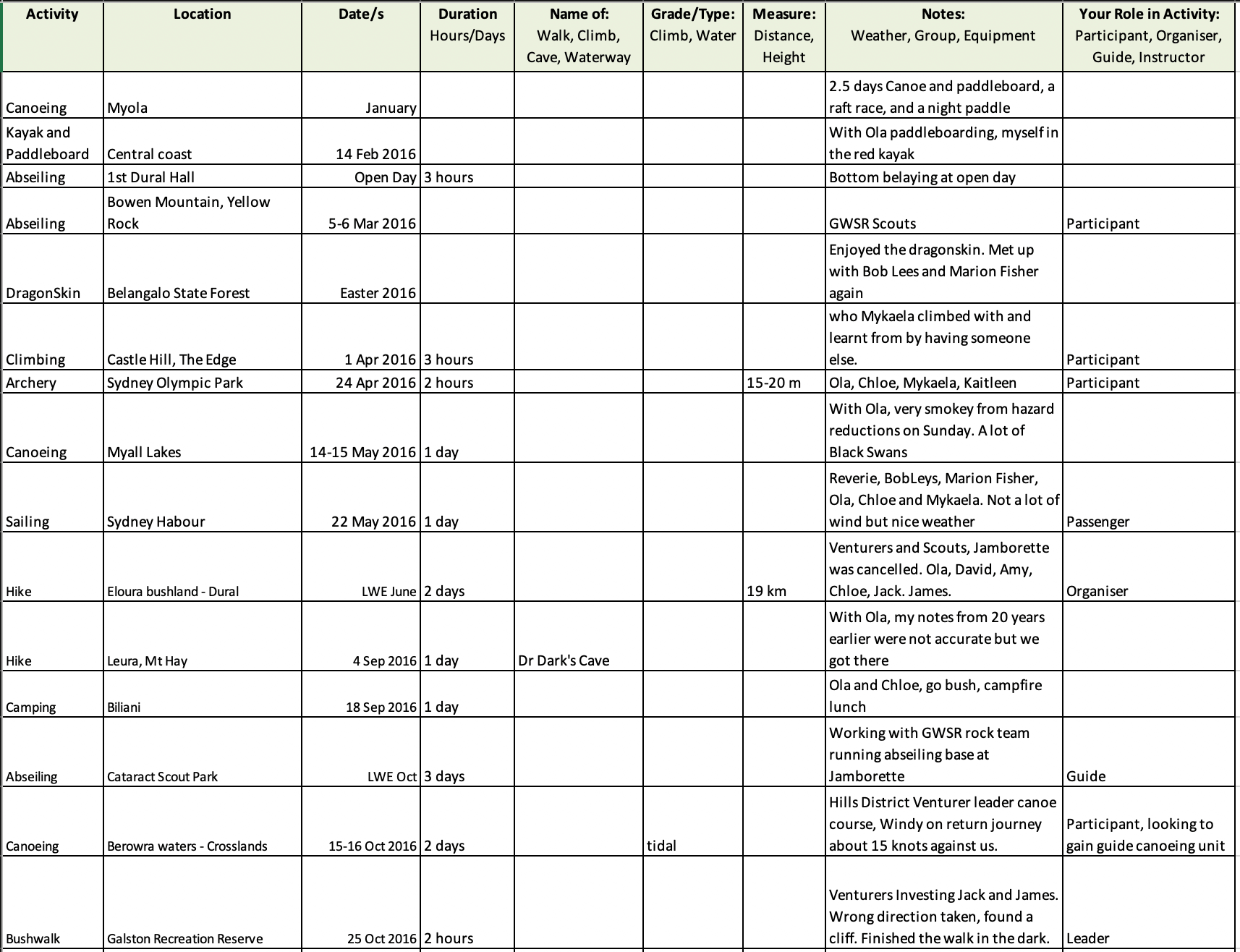
Remember, a picture tells a thousand words – records tell a story!
![]()

